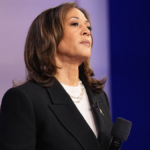US Top News and Analysis
The Federal Reserve has unofficially adopted the “higher for longer” mantra as its latest policy guidepost, and the slogan could pertain to a whole lot of things that investors should be watching. Along with an expected prolonged period of time for higher interest rates, other things that will be elevated in the longer term include oil prices, government deficits, defense spending and political division, according to Joseph Quinlan, head of CIO market strategy for Merrill Lynch and Bank of America Private Bank. Each “higher for longer” item carries investment implications. “This backdrop portends more chop and churn in the capital markets over the near term and underpins the CIO’s underlying investment theme that investors maintain a balanced and diversified asset mix, with an emphasis on high quality in both Equities and Fixed Income,” Quinlan said in a recent note to clients. Here’s a look at how each category breaks down: Interest rates “I do subscribe to the new moniker, ‘higher for longer.’ I didn’t coin it, but my expectation is that rates will need to stay high for a while,” Philadelphia Fed President Patrick Harker said Friday . That statement came from someone who nevertheless thinks the central bank doesn’t have to take rates any higher than where they are now. Quinlan sees a strong economy as well as higher fiscal deficits and more Treasury issuance to cover budget deficits as key supporting factors keeping rates high. The investment implications: a contrarian bias toward longer-duration debt as well as exposure to agency mortgage-backed securities and investment grade tax-free municipal bonds. Oil The Hamas attacks on Israel plus tighter supplies, declining inventories and limited spare capacity are lining up to keep energy costs high. “If investors have learned anything in the past few weeks, it’s that oil is the ultimate political commodity whose prices are set by the markets and politics,” Quinlan wrote. Investors are encouraged, then, to stay overweight energy as strong cash flow and earnings drive benefits to the sector. Budget deficits With one month still remaining in the fiscal year, the U.S. government has racked up a budget deficit of more than $1.5 trillion, which Quinlan sees continuing. From an investment standpoint, he noted that the fiscal problems add “an element of complexity and uncertainty to effective portfolio construction,” which requires caution ahead. “The greater the market worries and frets over America’s finances, the greater the potential for higher interest rates, deferred social spending, a credit downgrade, a weaker U.S. dollar and fiscal consolidation,” Quinlan said. Defense spending Geopolitical tensions, such as the wars in Ukraine and Israel, as well as the “cold war in Asia,” should lead to an increase in defense spending around the world. In 2022, global defense spending hit a record $2.2 trillion, Quinlan said, citing Stockholm International Peace Institute data. The investing implications: “We are bullish on ‘hard power’ given current geopolitics. U.S. firms are global leaders in defense and cyber activities,” he wrote. Political discourse With a presidential election looming, another potential government shutdown ahead and the ongoing efforts to elect a speaker of the House, politics could be a huge risk factor for the market. “The markets abhor political brinkmanship. The more uncertainty in Washington, the greater the concerns in the bond market about government spending and finances, and America’s ability to manage its debt levels,” Quinlan said. The investment implications: A rising dollar, which often has spelled trouble for stocks, as well as a potential for another credit downgrade that could roil markets.
Author Profile
Latest entries
 ScienceOctober 24, 2024How to cope with election stress and anxiety
ScienceOctober 24, 2024How to cope with election stress and anxiety HeadlinesOctober 24, 2024Harris doubles down on 'Hitler' comments at start of CNN town hall: 'unstable'
HeadlinesOctober 24, 2024Harris doubles down on 'Hitler' comments at start of CNN town hall: 'unstable' ScienceOctober 24, 2024Brain difference tied to autism found in living people for 1st time
ScienceOctober 24, 2024Brain difference tied to autism found in living people for 1st time HeadlinesOctober 24, 2024Homemade meal sends dozens of Maryland employees to the hospital
HeadlinesOctober 24, 2024Homemade meal sends dozens of Maryland employees to the hospital

